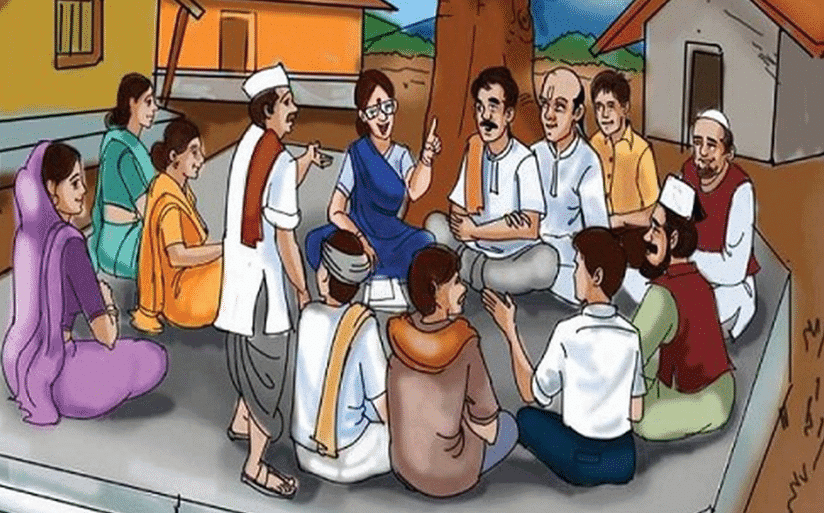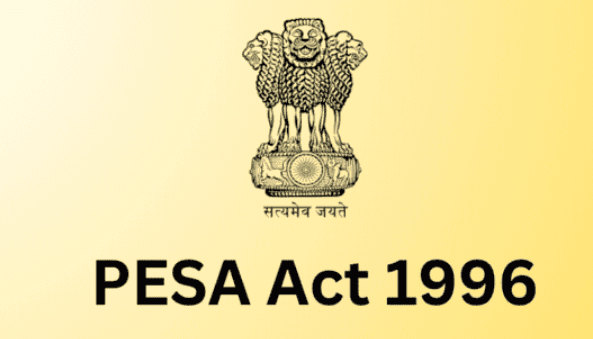|
The 73rd Constitutional Amendment Act of 1992 introduced the concept of ___ for rural governance. |
Card: 1 / 38 |
|
True or False: The Panchayati Raj system is a top-down approach to governance in rural areas. |
Card: 3 / 38 |
|
False. The Panchayati Raj system is a bottom-up approach that fosters grassroots democracy. |
Card: 4 / 38 |
|
Fill in the blank: The three levels of the Panchayati Raj system include Gram Panchayat at the village level, ___ at the block level, and Zila Parishad at the district level. |
Card: 5 / 38 |
|
How does the Balwant Rai Mehta Committee contribute to the Panchayati Raj system? |
Card: 7 / 38 |
|
It proposed the three-tier Panchayati Raj system and emphasized democratic decentralization. |
Card: 8 / 38 |
|
True or False: The Gram Sabha consists of all registered voters in a village Panchayat area. |
Card: 9 / 38 |
|
It serves as the advisory and coordinating body responsible for planning at the district level. |
Card: 12 / 38 |
|
Fill in the blank: The ___ Act of 1996 extended the provisions of the Panchayati Raj system to the Scheduled Areas. |
Card: 13 / 38 |
|
What are the compulsory provisions mandated by the 73rd Amendment for Panchayati Raj institutions? |
Card: 15 / 38 |
|
Establishment of Panchayats at three levels, direct elections, reservation of seats for SCs, STs, and women, and a fixed tenure of five years. |
Card: 16 / 38 |
|
True or False: The Finance Commission reviews the financial positions of Panchayati Raj institutions every two years. |
Card: 17 / 38 |
|
False. The Finance Commission reviews the financial positions every five years. |
Card: 18 / 38 |
|
What is a key recommendation of the Ashok Mehta Committee regarding the structure of Panchayati Raj? |
Card: 19 / 38 |
 Unlock all Flashcards with EduRev Infinity Plan Starting from @ ₹99 only
|
|
It recommended replacing the three-tier system with a two-tier system, consisting of Zila Parishad and Mandal Panchayat. |
Card: 20 / 38 |
|
Fill in the blank: The ___ is responsible for conducting elections to the Panchayat bodies. |
Card: 21 / 38 |
|
Explain the significance of the Eleventh Schedule in the context of Panchayati Raj. |
Card: 23 / 38 |
|
The Eleventh Schedule contains 29 functional items that define the responsibilities and powers of Panchayati Raj institutions. |
Card: 24 / 38 |
|
True or False: The PESA Act allows Panchayats at higher levels to assume the powers of lower-level Panchayats. |
Card: 25 / 38 |
|
False. The PESA Act prevents higher-level Panchayats from assuming the powers of lower-level Panchayats. |
Card: 26 / 38 |
|
What are the challenges faced by Panchayati Raj institutions in terms of financial empowerment? |
Card: 27 / 38 |
|
Panchayati Raj institutions often lack adequate devolution of funds, rely heavily on government grants, and have weak internal resource generation. |
Card: 28 / 38 |
|
Fill in the blank: Reservation of seats for women in Panchayati Raj institutions is ___ of the total seats. |
Card: 29 / 38 |
|
Identify one major finding of the G.V.K. Rao Committee regarding Panchayati Raj. |
Card: 31 / 38 |
|
Bureaucratization weakened Panchayati Raj.
|
Card: 32 / 38 |
|
The Gram Sabha acts as the foundation of the Panchayati Raj system, empowering local participation and decision-making. |
Card: 34 / 38 |
|
Discuss the impact of the 73rd Constitutional Amendment Act on local governance. |
Card: 37 / 38 |
|
The 73rd Amendment empowers local governance.
|
Card: 38 / 38 |



























